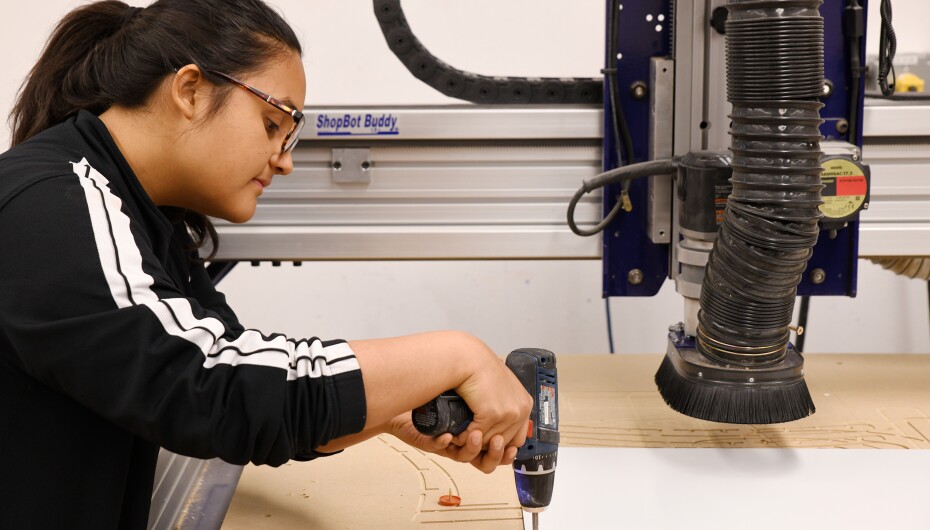In a new digital sculpture class students learn the basics of 3D modeling, 3D rendering and creating physical objects from digital models
In a new digital sculpture class taught by Associate Professor Collin Bradford, students explore the material, formal and conceptual potential of sculpture using new technologies. Digital 3D: Sculpture with Digital Tools is one of two new courses offered as part of the Art and Technology track within the BA degree.
Students enrolled in digital sculpture learn the basics of 3D modeling, 3D rendering and creating physical objects from digital models using a 3D printer, laser cutter and a CNC machine (also called a CNC router). Students also learn to create digital 3D files of physical objects using a high-quality 3D scanner.
According to Bradford, such tools “allow artists to make sculptural objects that engage the way we live now, in a hybrid of physical or real life and virtual or digital life.”
The Possibilities of Digital Tools
BFA student Dalila Sanabria, who recently completed the digital sculpture class, said she intends to use the CNC router and laser cutter for building sculptural pieces and supports for her artwork. “I also intend on using the 3D modeling software Rhinoceros for 3D printing purposes, as well as layout design for gallery exhibitions,” she said.
In addition to providing powerful tools for the conceptualization and creation of art, the digital sculpture class teaches valuable skills with broad applicability in a variety of fields ranging from architecture to industrial design, manufacturing and digital visualization.
Art alumnus Chris Purdie, who graduated with a BFA in 2010, has used tools like those taught in digital sculpture to create art objects that unite the familiar and the unfamiliar, such as a light bulb that plugs into three lamps and an extension cord with all male ends. In addition to sculpture, Purdie uses these tools daily to design and manufacture consumer products that are sold online and in retail outlets. Purdie noted that “the iterative process is so much quicker using these tools.”

Class Structure
Rather than learn the technical processes in isolation, students work on self-motivated projects and learn to use the equipment as they create their own art.
For their first assignment, Bradford invited his students to recreate a space from memory. While learning the technical aspects of modeling 3D spaces digitally, students also completed readings and discussed as a class the nature of memory, and the relationship between space and memory. “So we’re having these kind of content-oriented discussions in parallel with figuring out these technical tools,” Bradford said.
When teaching new software, Bradford may begin a class by showing examples of artwork that was created using similar tools, “so [students] can envision what type of things are possible.” Then he may show students a few techniques that build on the video tutorials they watch outside of class. After this introduction, students work on their assignments and projects, consulting with each other when they encounter hurdles and learning new skills Bradford pulls from various student projects to teach to the class.
This time through the course, in its inaugural semester, students gained real-world experience as they learned to use the equipment. Bradford expects the students, working in groups, to become experts on one of the machines so they can develop a manual for their classmates and future students.
“Part of being the first class also means that we are all figuring out how to do things together,” Sanabria said. “The tutorials we’re making will save time for future students, and give us the chance to specialize in technical machinery we never would have been able to learn otherwise.”
Worth the Effort
Sanabria recommended digital sculpture to all art students. “While it can seem intimidating at first, especially for those who don’t consider themselves ‘tech-savvy,’ it’s definitely worth the effort,” she said. “In the long run, the tools can save you much more time in making precise and more efficient work.”
In the long run, the tools can save you much more time in making precise and more efficient work. In addition to the digital sculpture class, art and technology students take a range of courses that introduce them to a variety of digital tools for making art, including web and print design, time-based art and photography. Learn more about the tracks available to art students at the undergraduate curriculum page on our website.

